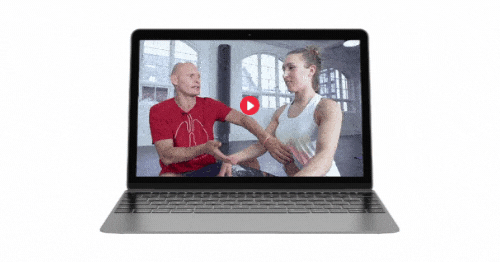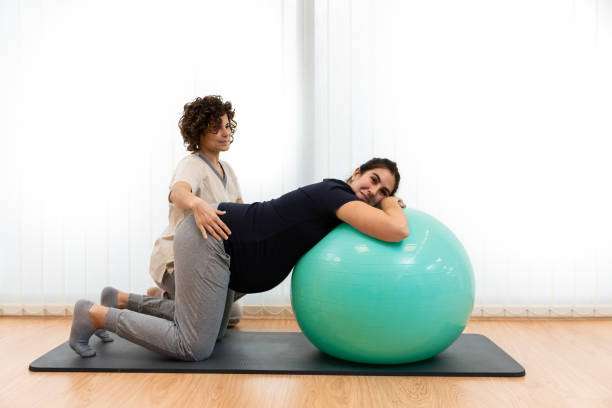Table of Contents
ToggleIntroduction
Preparing for labor is an exciting and nerve-wracking time for expectant parents. As the big day approaches, it’s crucial to equip yourself with effective tools to navigate the challenges and discomforts of labor. One such tool that can make a remarkable difference is mastering the art of breathing techniques. In this comprehensive guide, we will explore breathing techniques for labor, and importance of utilizing specific breathing techniques during labor, and how they can help manage pain, promote relaxation, and create a positive birthing experience.
The Importance of Breathing Techniques During Labor

Labor is a complex physiological process that requires the body to adapt and cope with intense sensations. Breathing techniques serve as a vital element in managing the pain and discomfort associated with labor. By focusing on your breath, you can create a sense of calmness and control, effectively reducing tension and anxiety. Additionally, proper breathing techniques play a role in optimizing oxygen flow, which aids in maintaining peak physical and mental performance during labor.
Understanding the Physiology of Breathing techniques for Labor
To fully appreciate the power of breathing techniques during labor, it’s essential to grasp the intricate relationship between breathing and the birthing process. Oxygen plays a crucial role during labor as it fuels the body’s energy requirements and helps maintain the health of both the mother and the baby. By practicing specific breathing techniques, you can enhance oxygen intake and optimize its distribution throughout your body, promoting overall well-being during this transformative event.
Moreover, breathing has a direct impact on the body’s response to pain. Deep and intentional breathing activates the body’s relaxation response, effectively reducing the perception of pain and promoting a sense of calm. Furthermore, by aligning your breath with uterine contractions, you can harmonize your body’s efforts, facilitating a smoother labor experience.

The Breatheology Method was developed over ten years ago and has since helped thousands of individuals all around the world live happy, healthy lives.
The Breatheology ESSENTIALS programme is intended to serve as an excellent introduction to the Breatheology Method.
- Take charge of your respiratory health with scientifically backed techniques, empowering you to manage stress, improve focus, and enhance your overall performance.
Preparing for Labor: The 3 Key Breathing Techniques for Labor

As you approach the momentous occasion of giving birth, it’s crucial to familiarize yourself with various breathing techniques that can support you throughout different stages of labor. By mastering these techniques, you empower yourself to cope with the varying intensity and demands of the birthing process. Let’s explore the three key breathing techniques:
Deep Breathing: Techniques and Benefits
Deep breathing involves filling your lungs with a slow and controlled inhalation, allowing your abdomen to rise and expand fully. It’s important to rhythmically exhale, ensuring a complete release of air, and repeat the process. Deep breathing promotes relaxation, improves oxygenation, and increases the supply of vital nutrients to both you and your baby. By practicing deep breathing, you create a calm atmosphere and establish a solid foundation for managing pain and promoting a positive mindset.
Slow Breathing: Techniques and Benefits

Slow breathing is characterized by maintaining a slow, steady rhythm of breath. This technique is especially effective during moments of intense pain or anxiety. By consciously slowing down your breath, you encourage relaxation and reduce tension in the body. Slow breathing triggers the body’s relaxation response, which counteracts the stress and fear response often associated with labor. Embracing slow breathing can help you find solace amid the chaos, restoring a sense of inner tranquility.
Patterned Breathing: Techniques and Benefits
Patterned breathing involves adopting a specific rhythmic pattern to guide your inhalations and exhalations. Common patterns include equal-length breaths or “4-4-4” breathing (inhalation for a count of four, holding the breath for a count of four, and exhaling for a count of four). By synchronizing your breath with a pattern, you divert your attention from pain and foster a sense of focus and control. Patterned breathing empowers you to actively participate in your labor experience, creating an environment conducive to progress and a positive birth outcome.
Breathing Techniques for Different Stages of Labor

Understanding the specific breathing techniques suitable for each stage of labor is essential to navigate the unique challenges presented at each phase.
Early Labor Breathing: Key Strategies to Stay Calm and Relaxed
Early labor marks the initial stages of cervical dilation and is often characterized by irregular contractions. To stay calm and relaxed during this phase, focus on diaphragmatic breathing. This technique involves breathing deeply into the belly, allowing the abdomen to rise and fall with each breath. This gentle, rhythmic breathing helps you conserve energy while promoting a sense of tranquility.
Active Labor Breathing: Techniques to Manage Increasing Intensity
Active labor is marked by regular and more intense contractions, as the cervix continues to dilate. To manage the increasing intensity, transition to slow, controlled breathing. Breathe in deeply through your nose, allowing the air to fill your belly, and exhale slowly through your mouth, releasing any tension or discomfort. This intentional breathing technique maximizes oxygen intake and facilitates a more relaxed state during the challenging phase of active labor.
Transition Phase Breathing: Coping Techniques During the Most Challenging Stage
The transition phase is the most intense and challenging stage of labor. To cope with the heightened sensations, employ patterned breathing techniques such as “hee-hee-hoo” or “blow away the pain.” These patterns provide a focal point, encouraging you to actively engage with your breath and take control of your experience. The rhythmic nature of patterned breathing aids in diverting attention from pain and generates a sense of empowerment during this pivotal stage.
Partner-Assisted Breathing Techniques for Labor

The presence of a supportive partner during labor can make a significant difference in your birthing experience. Partners can actively participate by providing physical and emotional support and assisting with breathing techniques. Understanding their role in supporting your breathwork is crucial to optimizing your birthing journey.
The Role of Partners in Providing Support During Labor
Partners play a vital role in creating a nurturing and positive birth environment. Their presence and support help alleviate anxiety, encourage relaxation, and contribute to an overall positive mindset. Partners serve as emotional anchors, providing reassurance and offering a comforting presence throughout the labor process.
Techniques for Partners to Assist with Breathing

Partners can actively support your breathing efforts by being mindful of your needs and providing encouragement. Some effective techniques include:
- Gentle reminders to maintain a steady breathing rhythm.
- Providing counter pressure during contractions to ease discomfort.
- Verbal cues or vocalization to guide and synchronize your breath.
- Offering a soothing touch or massage to promote relaxation.
- Creating a peaceful ambiance through dim lighting and calming music.
By actively participating in your breathing techniques, partners become valuable allies in your journey towards a positive birth experience.
Managing Pain Through Breathing Techniques for Labor

Pain management is a crucial aspect of labor, and breathing techniques can greatly contribute to your ability to cope effectively.
How Breathing Affects Pain Perception
Breathing has a direct impact on pain perception. Slow, intentional breathing activates the body’s parasympathetic nervous system, which triggers the relaxation response. When you focus on your breath, you divert your attention from pain, reducing its intensity and improving your ability to manage discomfort.
Integrating Breathing with Pain Management Options
While breathing techniques can be powerful tools for pain management, it’s important to remember that different options exist to support your well-being during labor. Discussing pain relief options with your healthcare provider and integrating them with your breathing techniques ensures a comprehensive approach to pain management tailored to your individual needs.
Breathing Strategies for Natural Pain Relief
Integrating breathing strategies with natural pain relief techniques can enhance your ability to manage discomfort without medical interventions. By practicing deep breathing, slow breathing, and patterned breathing in combination with techniques such as hydrotherapy, massage, or the use of birthing balls, you can create an environment conducive to natural pain relief, promoting a positive and fulfilling birth experience.
Relaxation Techniques to Enhance Breathing

Beyond pain management, relaxation techniques can enhance the effectiveness of breathing techniques during labor. These techniques assist in creating a calm and focused state of mind, conducive to a positive birthing experience.
Visualization and Guided Imagery Techniques
Visualization and guided imagery are powerful techniques that facilitate relaxation and focus. By mentally immersing yourself in positive images like serene landscapes or the image of your baby comfortably descending, you can create an inner sanctuary, allowing your body to respond positively to your visualization.
Mindfulness and Meditation for Calmness and Focus
Practicing mindfulness and meditation cultivates a calm and centered state of mind. By bringing your awareness to the present moment, you can let go of worries and anxieties, promoting emotional well-being. Incorporating meditation into your daily routine during pregnancy prepares you to harness its benefits during labor, enhancing your breathing techniques and fostering a tranquil birth experience.
Relaxation Exercises for an Optimal Breathing Experience
Engaging in relaxation exercises such as progressive muscle relaxation or guided relaxation audios can help alleviate tension and optimize your breathing experience. By consciously releasing tension in different muscle groups and embracing a state of deep relaxation, you create an environment where breathing techniques can flourish and contribute to a more positive labor journey.
Breathing Techniques for Specific Scenarios

Certain scenarios associated with labor may require specific breathing techniques to address unique challenges and promote a sense of empowerment.
Induction or Augmentation of Labor
When labor is induced or augmented medically, breathing techniques can help you adapt to the change in pace and intensity. Deep breathing, slow breathing, and patterned breathing, coupled with the support of your healthcare provider, can guide you through this process, promoting a positive and successful outcome.
Breathing Techniques for Women with Medical Conditions

Women with pre-existing medical conditions may require additional support during labor. Collaborating closely with your healthcare provider ensures a tailored approach to your specific needs. Breathing techniques should be gentle and adaptable to your condition, focusing on relaxation and optimizing oxygenation to provide comfort and maintain your well-being.
Coping Strategies for Prolonged Labor
Prolonged labor can challenge your stamina and mental resilience. Introducing intermittent rest periods during contractions, utilizing patterned breathing techniques, and fostering a supportive environment through the presence and involvement of your partner are crucial coping strategies. By optimizing your breathing techniques and engaging in external support, you can navigate a prolonged labor experience with grace and determination.
Positions and Movements that Support Effective Breathing

During labor, utilizing positions and movements that support effective breathing can enhance your overall experience and facilitate progress. By adopting these positions, you optimize oxygenation, encourage the descent of your baby, and promote a sense of control and relaxation.
Labor Positions that Facilitate Efficient Breathing
Certain labor positions lend themselves to efficient breathing, enhancing oxygen intake, and supporting the body’s natural processes. Consider positions such as:
- Upright positions, such as standing, swaying, or sitting on a birthing ball.
- Lunging or kneeling positions that utilize gravity to aid the descent of your baby.
- Leaning forward onto a supported surface, such as a bed or chair, to relieve pressure on the lower back.
These positions allow your abdomen to expand fully, empowering deep and effective breathing throughout the labor process.
Active Movements to Reduce Discomfort and Aid Breathing

Incorporating active movements into your labor routine can reduce discomfort and enhance your breathing techniques. Gentle swaying, hip rotations, or slow walking can help alleviate muscular tension and create a rhythmic flow that aligns with your breathing patterns. By engaging in these movements, you actively participate in your labor process, fostering a sense of empowerment and facilitating a smoother birth experience.
Incorporating Birthing Equipment for Enhanced Breathing
Birthing equipment, such as birth balls, squatting bars, or rebozos, can greatly assist in facilitating effective breathing. By utilizing these tools, you can find comfort and support in various positions, optimizing your breathing and offering relief during contractions. Discussing the availability and usage of these tools with your healthcare provider or birthing team ensures a seamless incorporation of birthing equipment into your labor experience.
Breathing Techniques for Cesarean Deliveries

While cesarean deliveries differ from vaginal births, breathing techniques remain valuable tools for maintaining calmness and promoting relaxation during the procedure and recovery.
Preparing for a Cesarean Birth
If you are scheduled for a cesarean birth, it is essential to communicate your wishes and preferences to your healthcare provider. Preparing mentally by practicing relaxation exercises and deep breathing can help alleviate anxiety and ensure a positive mindset leading up to the procedure.
Breathing Techniques During the Procedure and Recovery
During a cesarean birth, slow, controlled breathing is especially important in maintaining a sense of calmness and reducing anxiety. By taking slow breaths through your nose and exhaling deeply through your mouth, you encourage relaxation and optimize oxygenation for you and your baby. Additionally, practicing breathing techniques during the recovery period aids in pain management and facilitates a smoother transition.
Postpartum Breathing Exercises and Recovery

Breathing exercises play a crucial role in postpartum recovery, helping the body heal and gradually restoring diaphragmatic function.
Helping the Body Heal Through Breathing Exercises
After giving birth, the body undergoes significant changes as it recovers and heals. Incorporating gentle breathing exercises into your postpartum routine aids in toning the pelvic floor muscles, promoting blood circulation, and supporting the body’s natural healing mechanisms. Gradually increasing the depth and duration of breaths can strengthen the diaphragm and restore optimal breathing patterns.
Restoring Diaphragmatic Function Postpartum
Pregnancy and labor can temporarily impact the functionality of the diaphragm. By consciously engaging in diaphragmatic breathing exercises, you restore the strength and vitality of this essential muscle. Practice inhaling deeply, allowing the abdomen to rise, and exhaling slowly to activate the diaphragm and promote its optimal function.
Including Breathing Techniques in the Birth Plan

A comprehensive birth plan includes your preferences and wishes for each stage of labor, as well as strategies to support your breathing techniques. By including breathing techniques in your birth plan, you effectively communicate your desires to your healthcare providers and ensure a conducive birthing environment.
Communicating Your Preferences to Healthcare Providers
Your healthcare providers rely on your birth plan to understand your unique needs and preferences. It is imperative to clearly communicate your desire to utilize specific breathing techniques and specify any additional support you may require. Open and honest discussions with your healthcare team allow for a collaborative approach to your birthing journey.
Ensuring the Birthing Environment Supports Your Breathing Goals

Creating a birthing environment that aligns with your breathing goals significantly contributes to a positive labor experience. Dimmed lights, soft music, and a calm ambiance can enhance relaxation and foster an optimal breathing atmosphere. By discussing your preferences with your healthcare providers, they can help create a nurturing environment aligned with your desires.
Conclusion
Mastering breathing techniques for labor is an invaluable skill that empowers you to manage pain, promote relaxation, and cultivate a positive birthing experience. By understanding the importance of breathing techniques for labor, exploring the various techniques suitable for different stages, and incorporating relaxation and visualization, you can embark on your journey to motherhood with confidence and grace. Remember, your breath is a powerful tool that can guide you through the beautiful miracle of birth.











